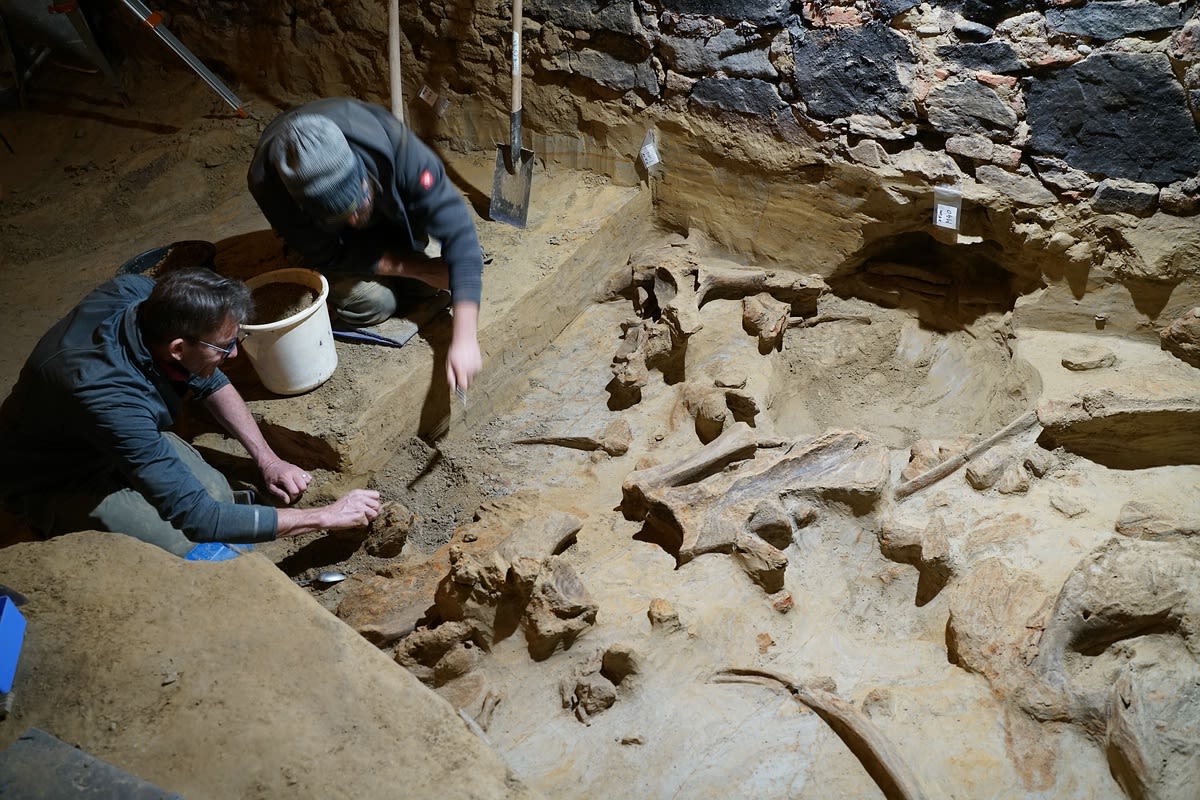
In Lower Austria’s Krems district, a local winemaker stumbled upon a legendary discovery while renovating his wine cellar in Gobelsburg: around 300 mammoth bones dating back approximately 30,000 to 40,000 years, the likes of which haven’t been spotted in a century! Since he reported the find in mid-May, archaeologists now corroborate that the cellar and accompanying area can be identified as “a significant bone site”, with remains of at least 3 mammoths!
A Renovation, A ‘Bone Chilling’ Discovery
When Andreas Pernerstorfer stumbled upon the finds, he promptly reported them to the Federal Monuments Office. Pernerstorfer’s discovery was then referred to the Austrian Archaeological Institute of the Austrian Academy of Sciences (OeAW) for further investigation.
Pernerstorfer told the Austrian Broadcasting Corporation, ORF, that he was renovating his wine cellar when he made the discovery.
“I thought it was just a piece of wood left by my grandfather. But then I dug it out a bit and remembered that in the past my grandfather said he had found teeth. Then I immediately thought it was a mammoth,” Pernerstorfer elaborated.
Since mid-May, archaeologists from the OeAW have meticulously excavated layers of mammoth bones at the site. Thomas Einwögerer and Hannah Parow-Souchon, researchers from the institute, note that accompanying stone artifacts and charcoal suggest the relics are indeed ancient, belonging to a period between 30,000 and 40,000 years ago.

“Such a dense bone layer of mammoths is rare,” says Hannah Parow-Souchon, who is leading the excavation, told the Austrian Academy of Sciences in a press release. “It’s the first time we’ve been able to investigate something like this in Austria using modern methods.”
Although there have been previous finds in Gobelsburg, this find in stands as a rare occurrence, with comparable discoveries in Austria dating back 150 years. Interestingly, a previous excavation in the same area revealed a rich layer of bones and cultural artifacts.
“We think we have mostly the complete animals. They’re not in anatomical connection but we do probably have all parts,” she said, adding that the recovered haul includes some rare finds, including a lingual (tongue) bone.”

Hannah-Parow-Souchon (right) explains the locations of the mammoth bones to the Langenlois City Councillor for Culture, Sonja Fragner and the owner of the wine-cellar, Andreas Pernestorfer (Left). (Einwogerer /OeAW-OeAI)
Stone Age Humans Hunting Giant Creatures
The discovery raises interesting questions about the interactions between Stone Age humans and these colossal creatures. OeAW researcher Parow-Souchon acknowledges the limited understanding of mammoth hunting techniques, emphasizing the need for further study.
With bones from three distinct mammoths uncovered, the site may offer clues about ancient hunting practices, potentially revealing evidence of human intervention leading to the demise of these creatures. It is plausible that the location served as a natural trap, with humans possibly herding the mammoths into the area before executing a coordinated hunting effort.
Woolly mammoths, comparable in size to modern African elephants, reached heights of up to 3.5 meters (11.5 foot) and weighed over 8 tonnes, making them formidable prey, reports The Times.

Coexisting with Stone Age humans, mammoths served as a vital resource, with their bones and tusks utilized for crafting tools, art, and various artifacts, alongside being a source of sustenance.
A study released in December 2023 pointed to how Neanderthals hunted woolly mammoths twice the size of modern elephants 125,000 years ago, with conclusive evidence emerging from Germany. They pointed out that eventually, these hunting practices would lead to mass extinction of the species by eventual Homo sapiens.
It’s proposed that ancient humans may have possessed the capacity to store substantial amounts of meat and fat resources, hinting at scenarios where they could have gathered in larger groups than previously assumed. If knowledge like this was available and implemented 125,000 years ago, it opens up avenues to understand the current finds and comprehend how advanced ancient humans were
Presently, the researchers are diligently examining the find, with plans to transfer the artifacts to the Natural History Museum Vienna for restoration. The excavation efforts have been made possible through funding from the Federal Monuments Office and the province of Lower Austria





